The Big Best Book List for summer
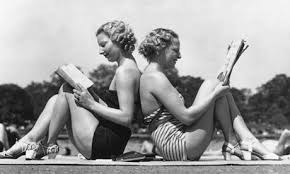
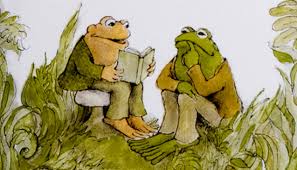
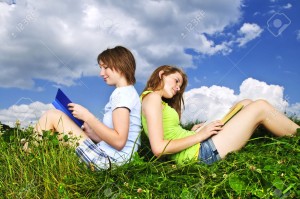
That’s an unsubstantiated claim but, heck, we’ve been building a summer reading list for years and so many people contribute enthusiastic suggestions, I’m just going to stick with BIG BEST BOOK LIST. You all make it true.
Listeners shared their recommendations with the radio audience and book mavens Ellen Rocco, John Ernst and Chris Robinson.
>>Listen to the Summer Reading Call-in
To continue building the book list, email picks to me at [email protected], or share them in a comment on this post. We’ll pull them all together to build the big list below.
I’ll kick it off with my recommended titles…
Ellen Rocco, NCPR station manager/call in co-host
The Horseman, Tim Pears. Beautifully written, loaded with the language of turn of the century rural farm workers and carters in Great Britain…and full of details about the tools and techniques of handling draft horses. It’s one of those quiet simple novels that pulls you.
You Don’t Have to Say You Love Me, Sherman Alexie. A memoir by the poet, novelist and screenwriter who grew up on the Spokane Indian Reservation. This one wrenched me around in so many emotional and intellectual directions it left me dizzy…I’m in awe of Alexie’s talent.
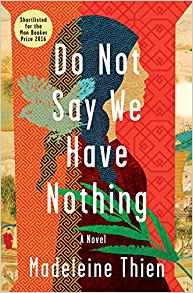 Do Not Say We Have Nothing, Madeleine Thein. Set over the years before and following the Cultural Revolution in communist China, the narration weaves back and forth between decades, wrapping the reader in the intimate details of a family finding its way through the experience of revolution and post-revolution. In some ways, it reminded me of the Orphan Master’s Son in the way the author grabbed me–almost against my will–to read my way through the darkness. While Thein’s book is not quite as dark, I had a visceral reaction to the world of repression and its impact on individuals and families.
Do Not Say We Have Nothing, Madeleine Thein. Set over the years before and following the Cultural Revolution in communist China, the narration weaves back and forth between decades, wrapping the reader in the intimate details of a family finding its way through the experience of revolution and post-revolution. In some ways, it reminded me of the Orphan Master’s Son in the way the author grabbed me–almost against my will–to read my way through the darkness. While Thein’s book is not quite as dark, I had a visceral reaction to the world of repression and its impact on individuals and families.
Strangers in Their Own Land: Anger and Mourning on the American Right, Arlie Russell Hochschild. Recommended by John Ernst earlier this year, I agree with him about it. It fills in around the personal narratives of such books as Hillbilly Elegy.
His Bloody Project, Graeme MacRae Burnet. This is set in rural Great Britain and immerses us in the harsh life of farmers working on land owned by the nobility. It’s a 19th century murder story, but not a mystery. The writing is vivid and convincing.
The Noise of Time, Julian Barnes. A fictionalized telling of the life of composer Dmitri Shostakovich–maligned for “selling out” to the communist dictatorship of the 20th century Soviet Union. Generally condemned by fellow musicians and artists, this novel gives us a more complex reading of the choices we make under pressure.
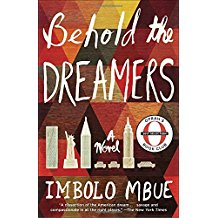 Behold the Dreamers, Imbolo Mbue. I picked this one up because it is the first of what seems to be a reborn “Oprah’s Picks.” You may remember a decade or so ago when Oprah regularly selected books to recommend to the public. Apparently, she’s returned to the practice. I was curious. I had no idea what the book was about. As it turns out, I loved this book. Set in NYC, it’s the story of an immigrant from Cameroon. Honest, evocative and moving, without being pedantic or political.
Behold the Dreamers, Imbolo Mbue. I picked this one up because it is the first of what seems to be a reborn “Oprah’s Picks.” You may remember a decade or so ago when Oprah regularly selected books to recommend to the public. Apparently, she’s returned to the practice. I was curious. I had no idea what the book was about. As it turns out, I loved this book. Set in NYC, it’s the story of an immigrant from Cameroon. Honest, evocative and moving, without being pedantic or political.
The Sellout, Paul Beatty. I’m halfway through this one. It won the Man Booker Prize. It’s been called the most important work of fiction in years. So, why am I struggling with it? I will finish it…
The North Water, Ian McGuire. One of the last whaling ships heads to the northern Atlantic…but it’s not after whales. A fine read.
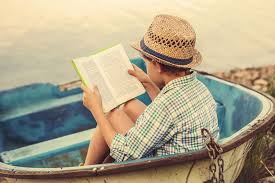 John Ernst, Call in co-host, Elk Lake
John Ernst, Call in co-host, Elk Lake
SOUTH AND WEST: From a Notebook – Joan Didion (2017)
Also: The Year of Magical Thinking; Blue Nights; Run River
Probably the most important (but hardly original) thing to say about Joan Didion is that she writes like an angel. There is hardly a sentence, much less a paragraph, that does not cry out to be quoted. What she writes about may be less important than her eye for the odd detail, her feel for the subtleties of mood, her God-given brilliance at weaving words into electric prose.
The longer of the two pieces in South and West consists of notes Didion took during a month-long motor trip through the South in 1970 – from News Orleans through Mississippi and Alabama and back. Although the ostensible purpose of the was that “it might be a piece,” she avoids the obvious interviews and soaks up atmosphere at cheap cafes and at motel swimming pools where the water “smells of fish.” She visits some literary friends like Walker Percy, but her attention is on the look and feel and sound of ordinary small towns. She catches bits of conversation like that of a young woman responding to an invitation to visit from an acquaintance: “We’ll never get up there. I never been anyplace I wanted to go.” And as Nathaniel Rich points out in his perceptive foreword, she foreshadows current themes in the voices she hears: a defensiveness against the press and against technology and science, and a longing to go back to the old ways and to “armed revolt.”
The second short piece, “California Notes,” is a fragment from a planned Rolling Stone story on the Patty Hearst trial that turned into a reflection on the West and on the values with which Didion grew up. She never completed the original assignment, but she produced something better.
Only rarely do I wish a book was longer than it is. This is certainly one.
BETWEEN THEM: Remembering My Parents – Richard Ford (2017)
Also: The Sportswriter; Independence Day; the Lay of the Land; Canada
Richard Ford’s new book contains memoirs of his parents written 30 years apart and published here together as a meditation on their lives.
Ford begins with his father, Parker– a big, pleasant, unambitious man who was a drummer (salesman) for Faultless Starch for most of his life. Ford’s mother, Edna, a pretty, vivacious country girl from rural Arkansas, married Parker soon after leaving her education by nuns and happily joined his life on the road. For 15 years the two enjoyed an apparently full and satisfying life travelling Faultless’ Deep South region promoting and selling starch.
After the author was born, this life ended and the family set up home in Jackson, Mississippi. Ford remembers his father returning from the road each Friday, bringing paper-wrapped packages of boiled shrimp or oysters, a loved but not indelible presence to his son. It may be a stretch to say that Ford’s descriptions of Frank Bascombe plying the by-roads of New Jersey, selling real estate, owes something to the imagined life of his father, who died young of a heart attack. His relationship with his mother, who lived into the 1980s, was close and more deeply defined but never oppressive.
It is clear that Ford realized he was “third” among his parents – that they meant more to each other than he to them. And he has said he liked it that way. He was “between them” — close and loved but also somewhat apart.
With subtlety and restrained emotion, Ford recreates two people who were notable mainly for their places in his memory. He carefully removes himself from the consideration and presents only the facts that he knows. It is an act of love and a literary gift.
LAB GIRL – Hope Jahren (2016)
This is a rare book, special in its form and in the immediacy and energy of its expression. It is partially a memoir, beginning with the dawning of a young girl’s initial excitement with science, following her professor father to his lab after dinner through frigid Minnesota winter nights. But interspersed with the memoir are short, punchy insights into the lives and history of trees, including how they communicate. I predict you will never look at a tree in exactly the same way after reading Jahren.
This is a very personal book. It follows Jahren’s struggles for funding as she sets up new labs in four different universities. It outlines her intensely close relationship with her lab partner, Bill, a nocturnal creature who sleeps under a lab bench, in a service closet, or in his car when money runs out, who lives on candy bars, avoids most human contact and is a brilliant scientist and teacher. It describes Jahren’s killing work ethic and sleeplessness spinning into manic depression. It recounts the major auto accidents the author survived on long work trips, one of which, a near fatal overturn on black ice on the way to a conference that was vital to the economic survival of her lab.
Jahren is a geobiologist who manages to make her work in botany compelling and the accounts of her experiments fascinating. She has earned enormous recognition professionally, though it was always at a cost. Now successful, happily married and with a son, she is still obviously sleep-deprived and driven. But the bottom line for me is that she is a writer of extraordinary ability. Her story is honest, funny, moving and provocative. This is above all a book about a brave, fiercely dedicated and engaging person.
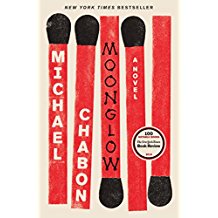 MOONGLOW: A Novel – Michael Chabon (2016)
MOONGLOW: A Novel – Michael Chabon (2016)
Also: The Amazing Adventures of Kavalier & Clay; The Yiddish Policeman’s Union; Telegraph Avenue
Moonglow is a novel in the form of a memoir. The story is stitched together from interviews the author has with his normally taciturn grandfather towards the end of the older man’s life. If you recall Peter Falk’s exchanges with his grandson while reading a bedtime story in the film, The Princess Bride, you will have some idea of the edgy tone of these conversations.
The grandfather here is an extraordinary character, a brilliant electrical engineer who discovers the hidden plans for the German V-2 rocket during World War ll and who years later makes exact rocket models for NASA. A sometimes successful entrepreneur, he is also an obsessive, anger-driven, and anti-social man who has spent time in prison for aggravated assault on a boss who had the temerity to fire him. The author’s grandmother is also quite something. A beautiful wartime refugee, she is possibly a witch (or sorceress) who has entirely invented her early life and has spells of unbalance that send her to an institution. To a child she is both terrifying and intriguing.
Chabon’s skills with language and his ability to create tone and atmosphere are dazzling. One scene has the grandfather saying Kaddish in a synagogue that has been converted from an IHOP and whose Rabbi is described as “the world’s greatest Jewish squash player.” It only gets nuttier from there.
This novel is a wonder – poignant, funny, moving and completely involving. It is perhaps most like The Yiddish Policeman’s Union, my favorite of the previous novels, and is completely crazed in the same delightful way.
HILLBILLY ELEGY: A Memoir of a Family and Culture in Crisis – J.D. Vance (2016)
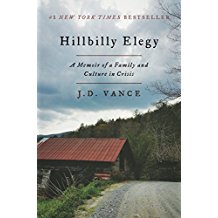 Vance was 31 years old when he wrote this memoir of growing up in a self-described Hillbilly Appalachian Kentucky and rust-belt Ohio. Surrounded by poverty, addiction and a largely dysfunctional family, Vance was saved from a dead-end life by the fierce support of his grandmother (Mamaw) a gun-toting potential killer feared by everyone and by his grandfather (Papaw) a recovering alcoholic whose insistence on tutoring him in math saved his once-wobbly academic career.
Vance was 31 years old when he wrote this memoir of growing up in a self-described Hillbilly Appalachian Kentucky and rust-belt Ohio. Surrounded by poverty, addiction and a largely dysfunctional family, Vance was saved from a dead-end life by the fierce support of his grandmother (Mamaw) a gun-toting potential killer feared by everyone and by his grandfather (Papaw) a recovering alcoholic whose insistence on tutoring him in math saved his once-wobbly academic career.
What has made this book a bestseller is Vance’s absolutely believable and frank narrative of a path that took him from a near high school dropout to Ohio State University and Yale Law School. What has also attracted so many readers is a look at the embattled citizens of hollowed out former mining towns and small cities abandoned by manufacturing. These were some of the people who elected Donald Trump president. Who are they? How did they arrive where they are? What are their lives like? What are their hopes and expectations?
Vance provides a nuanced look at a people mired in poverty and drug abuse through which occasionally, tough strands of family loyalty and resilience take hold. These are people it might not be easy to live with but who certainly earn our respect. We owe a debt to J.D. Vance for shining a bright light on them. But this book is not a sociological tract; it is a story about real people by a talented writer, a natural.
LINCOLN IN THE BARDO – George Saunders (2017)
Also: Tenth of December; Civil War in Bad Decline
George Saunders’ first novel is a difficult book to describe. It takes place in a Georgetown cemetery in the winter of 1862, just as the civil war is ramping up to maximum carnage. President Lincoln’s beloved 11-year-old son has caught a sudden fever and died. He is laid to rest in a nearby cemetery soon afterward.
What follows is a kind of chorale of the voices of those who have died but remain “in Bardo” — a kind of purgatorial transition state. These are seamlessly mingled with contemporary historical accounts. The lead fictional voices are those of a deceased minister; an unfortunate husband killed from a falling beam just before consummating his marriage to a lovely younger woman; and an unhappy gay man who has committed suicide. They, and a host of others, re-experience their lives and air their grievances. Into their midst, in the middle of the night, comes the grieving president, unable to part from the son who was a rare bright spot in his world.
In Saunders’ masterful hands, this material is neither grim nor perverse but human, beautiful, raunchy, funny, and moving. The story is told largely in one- and two-line exchanges, involving a large and rotating cast, including Willie Lincoln, whose decision as to whether to hang on in the Bardo or move to ultimate judgement, is the crux of the plot but hardly its only element.
In part, the novel reminds me of the enormously moving graveyard scenes in Thornton Wilder’s Our Town. But Saunders has a much wider scope than Wilder – he takes in an entire microcosm of society in all its ugliness and beauty and humanity. This is a book that is hard to forget, a brilliant and original work by a writer at the height of his powers.
STRANGERS IN THEIR OWN LAND: Anger and Mourning on the American Right — Arlie Russell Hochschild
Also: The Second Shift; The Time Bind; The Outsourced Self
Berkeley Sociologist Arlie Hochschild set herself the task of putting aside her blue state liberal assumptions to climb what she calls “the empathy wall” and explore the lives and thinking process of tea party members. Her research centered in St. Charles, Louisiana, a town of several thousand residents in the heart of a petrochemical sprawl where the bayous are polluted and vast drilling-related sinkholes have swallowed up houses, vehicles, and many acres of land. Her focus was on six individuals, and her main question was why these people who cherish the place they live, many of them hunters and fisherman, fervently opposed the EPA and all government attempts to protect or restore their ravaged environment.
Hochschild has coffee in their kitchens, goes to their fish fries and parades, visits their birth places and cemeteries, attends their church services and attempts to understand. The answers are varied: fury at minorities and welfare recipients perceived as getting ahead of them; faith that God would protect them from harm; reluctance to be a “whiner” or bellyacher; loyalty to the large companies that provided them with jobs and to the American flag, standing for traditional values. Many endorsed Donald Trump as the antithesis of the hated liberal/Washington elite.
Hochschild defines the gap and shows her respondents as loving parents and patriotic, decent people. You may not agree with them after reading the book, but you will have a better idea of who they are.
The author is married to the son of Harold Hochshild, founder of the Adirondack museum and first chair of the Rockefeller commission.
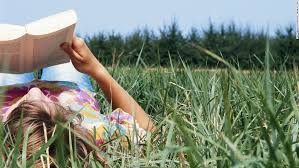 Chris Robinson, Call in co-host, Clarkson University
Chris Robinson, Call in co-host, Clarkson University
Much of the reading I have been doing since December has been shaped by the election of Donald Trump. I have been thinking a lot about the American polity and the immense suffering spawned by the concentration of wealth in the hands of the very few, the denigration of women, a reassertion of old forms of white supremacy, willful ignorance of science, and a broader anti-intellectualism that may not have begun with Trump, but has been accentuated by his approach to governance. I read to inform myself of forms of governance from the past that reflect the concentration of wealth, corporatism and political power represented by the current administration, and of the forms of resistance that succeeded in challenging and blunting that power. And, honestly, I read to escape the sort of day-to-day drama that has come to characterize the way this administration operates. It feels like infantile silliness, but the drama distracts us from policies that are stunning in their anti-democratic execution and cause genuine pain to the poor, immigrants (documented and undocumented), and to other groups marginalized by ethnicity, religious difference, and ideology. Novels create worlds that are welcomed relief from the present political climate. They can even depict courage in the face overwhelming odds. This is literature as aspirational and inspirational.
Fiction
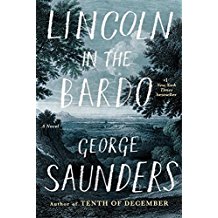 Donna Tartt, The Secret History and The Goldfinch. After reading and enjoying The Secret History in the fall, I picked up Tartt’s most recent novel. She is not a minimalist. Her books are long. But her sentences are beautiful, her plots are complex and keep you interested, and her characters achieve amazing psychological depth. The Goldfinch is a remarkable novel of human tragedy and loss answered by the joys of friendship and romance. When I read Tartt, I am absorbed mostly by the story. But I find myself stepping back and feeling awe and maybe a little envy for her immense literary talent.
Donna Tartt, The Secret History and The Goldfinch. After reading and enjoying The Secret History in the fall, I picked up Tartt’s most recent novel. She is not a minimalist. Her books are long. But her sentences are beautiful, her plots are complex and keep you interested, and her characters achieve amazing psychological depth. The Goldfinch is a remarkable novel of human tragedy and loss answered by the joys of friendship and romance. When I read Tartt, I am absorbed mostly by the story. But I find myself stepping back and feeling awe and maybe a little envy for her immense literary talent.- Ilija Trojanow and Philip Boehm, The Lamentations of Zeno
- Haruki Murakami, After Dark
- Ted Chiang, Stories of Your Life
- Don DeLillo, Zero K
- Philip Kerr, Philosophical Investigations
- George Saunders, Lincoln at the Bardo
- Elif Batuman, The Idiot
- Han Kang, The Vegetarian
- Matt Ruff, Lovecraft Country
- Ruth Ozecki, A Tale for the Time Being
- Hanya Yanagihara, A Little Life
- Karl Ove Knausgaard, My Struggle, Volume Five
- Colm Toibin, House of Names
- Laurent Benet, The Seventh Function of Language
- Cory Doctorow, Walkaway
Non Fiction
- Roy Scranton, Learning to Die in the Anthropocene.
- Gary Styngart, Little Failure
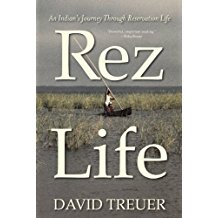 David Trauer, Rez Life
David Trauer, Rez Life- Alice Kaplan, In Search of The Stranger
- John Feffer, Splinterlands
- Chris Hedges, Unspeakable
- Claude M. Steele, Whistling Vivaldi
- Jedediah Purdy, After Nature
- Raoul Peck, James Baldwin, I Am Not Your Negro
- Marshall Berman, Modernism in the Streets
- Olivia Laing, The Lonely City and A Trip to Echo Spring
- Laura Kipnis, Unwanted Advances
- Kay Redfield Jamison, Robert Lowell, Setting the River on Fire: A Study of Genius, Mania and Character
- Julio Cortazar, Lectures on Literature
- Geoff Dyer, White Sands
- Christopher Hitchens, Mortality
List within a list: librarians weigh in
Big thanks to Rebecca Donnelly of the Norwood Public Library for pulling together recommendations from librarians.
Here is a list based on the 2017 summer reading theme, Build a Better World. (FYI, libraries across the country participate in a collaborative program where we can use a theme, custom artwork, and a programming manual for their summer reading programs for kids, teens, and adults. So that’s where the theme comes from, and they’re using “build” in the literal & the figurative sense, for everything from learning to make things to utopian societies!)
A Hero Of France by Alan Furst (2016)
Occupied Paris for the first time since Red Gold (1999 pub), Furst has set this novel during the war itself, instead of on the eve of the war. Members of the French Resistance network young and old, aristocrats and schoolteachers, defiant heroes and ordinary people all engaged in clandestine actions in the cause of freedom. From the secret hotels and Nazi-infested nightclubs of Paris to the villages of Rouen and Orleans.
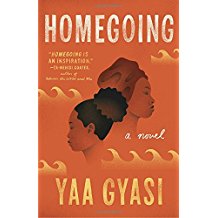 Homegoing by Yaa Gyasi (2016)
Homegoing by Yaa Gyasi (2016)
Two half sisters, Effia and Esi, unknown to each other, are born into two different tribal villages in 18th century Ghana. Effia will be married off to an English colonial, and will live in comfort in the sprawling, palatial rooms of Cape Coast Castle, raising half-caste children who will be sent abroad to be educated in England before returning to the Gold Coast to serve as administrators of the Empire. Her sister, Esi, will be imprisoned beneath Effia in the Castle’s women’s dungeon, and then shipped off on a boat bound for America, where she will be sold into slavery. Stretching from the tribal wars of Ghana to slavery and Civil War in America, from the coal mines in the north to the Great Migration to the streets of 20th century Harlem, Yaa Gyasi’s has written a modern masterpiece, a novel that moves through histories and geographies and–with outstanding economy and force–captures the troubled spirit of our own nation.
The Mars Trilogy by Kim Stanley Robinson (1992-6)
Red Mars (1992), Green Mars (1993) and Blue Mars (1996) depict a largely (but not entirely) utopian society as it colonizes and terraforms Mars. A violent revolution occurs in 2061 against the power of the meta-national corporations who wield much of the power on Earth and Mars. The rebels (both Earth-born and native-born, hailing from many disparate backgrounds and beliefs) are forced to live in hidden sanctuaries of various types, until a successful revolution creates an independent Mars. In the wake of the revolution, they try to construct an inclusive, equitable and ecological Martian society, based on eco-economics and cooperative businesses.
Refuge by Dina Nayeri (2017)
An Iranian girl escapes to America as a child, but her father stays behind. Over twenty years, as she transforms from confused immigrant to overachieving Westerner to sophisticated European transplant, daughter and father know each other only from their visits: four crucial visits over two decades, each in a different international city. The longer they are apart, the more their lives diverge, but also the more each comes to need the other’s wisdom and, ultimately, rescue.
Between the World and Me by Ta-Nehisi Coates (2015)
For Ta-Nehisi Coates, history has always been personal. At every stage of his life, he’s sought in his explorations of history answers to the mysteries that surrounded him — most urgently, why he, and other black people he knew, seemed to live in fear. What were they afraid of? Coates provides readers a thrillingly illuminating new framework for understanding race: its history, our contemporary dilemma, and where we go from here.
Homesteading from Scratch: Building Your Self-Sufficient Homestead, Start to Finish by Steven Jones (2017)
A complete guide to homesteading, from farming to fiber arts and canning, to keeping your business records in good shape.
Just Mercy by Bryan Stevenson (2014)
The founder of the Equal Justice Initiative in Montgomery, Alabama recounts his experiences as a lawyer working to assist those desperately in need, reflecting on his pursuit of the ideal of compassion in American justice.
Letters to a Young Farmer by Stone Barns Center for Food & Agriculture (2017)
Letters to a Young Farmer is for everyone who appreciates good food grown with respect for the earth, people, animals, and community. Three dozen esteemed writers, farmers, chefs, activists, and visionaries address the highs and lows of farming life–as well as larger questions of how our food is produced and consumed–in vivid and personal detail. Letters to a Young Farmer is both a compelling history and a vital road map–a reckoning of how we eat and farm; how the two can come together to build a more sustainable future; and why now, more than ever before, we need farmers.
Teen Books
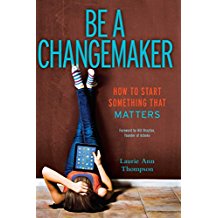 Be a Changemaker by Laurie Ann Thompson (2014)
Be a Changemaker by Laurie Ann Thompson (2014)
Empower yourself in today’s highly connected, socially conscious world as you learn how to wield your passions, digital tools, and the principles of social entrepreneurship to affect real change in your schools, communities, and beyond. Contains profiles of successful projects, step-by-step guides to applied changemaking, and a variety of resources.
Volunteering Smarts by Sandra Donovan (2013)
A guide to help teens find the best volunteer opportunities for them in their communities–change begins at home!
Children’s Books
Whoosh! Lonnie Johnson’s Super-Soaking Stream of Inventions, by Chris Barton and illustrated by Don Tate. (2016)
A love for rockets, robots, inventions, and a mind for creativity began early in Lonnie Johnson’s life. Growing up in a house full of brothers and sisters, persistence and a passion for problem solving became the cornerstone for a career as an engineer and his work with NASA. But it is his invention of the Super Soaker water gun that has made his most memorable splash with kids and adults.
–Angela Newman, North Country Library System
Drum Dream Girl: How One Girl’s Courage Changed Music, by Margarita Engle and illustrated by Rafael López. (2015)
Inspired by the childhood of Millo Castro Zaldarriaga, a Chinese-African-Cuban girl who broke Cuba’s traditional taboo against female drummers, Drum Dream Girl tells an inspiring true story for dreamers everywhere.
–Angela Newman, North Country Library System
Last Stop on Market Street by Matt de la Peña (2015)
A young boy rides the bus across town with his grandmother and learns to appreciate the beauty in everyday things.
101 Ways you can help save the Planet before you’re 12 by Joanne O’Sullivan (2009)
Presents ideas to protect the planet by doing simple things such as cutting down on water use, starting a compost bin, and creating litter-free lunches.
Important Jobs by Teresa Domnauer (2014)
Introduces young readers to different occupations, including police officers, scientists, construction workers, and chefs.
Rosie Revere, Engineer (2013) & Ada Twist, Scientist (2016) by Andrea Beaty
Both picture books feature spunky female scientists who aim to make their own impact on how things work in our world.
Michelle McLagan, Hepburn Library of Lisbon
That’s Why We Don’t Eat Animals: A Book About Vegans, Vegetarians, and All Living Things (2009) by Ruby Roth
A book geared to children that explains how we can save the animals and our planet while making the world a better place.
–Michelle McLagan, Hepburn Library of Lisbon
We’re All Wonders by R.J. Palacio (2017)
The sort of world I want to build is one in which people choose kindness, and one in which they accept and welcome people who aren’t like them. It’s a picture book with a simplified theme of her chapter book, Wonder, a theme of how being treated with empathy and kindness can remind us that each and every one of us is just that—a wonder!
–Val White, Canton Free Library
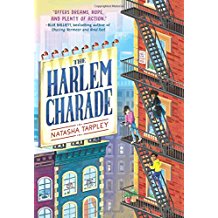 The Harlem Charade by Natasha Tarpley (2017)
The Harlem Charade by Natasha Tarpley (2017)
Seventh-graders Jin, Alexandra, and Elvin come from very different backgrounds and circumstances, but they all live in Harlem, and when Elvin’s grandfather is attacked they band together to find out who is responsible–and the search leads them to an enigmatic artist whose missing masterpieces are worth a fortune, and into conflict with an ambitious politician who wants to turn Harlem into an historic amusement park.
—
Guy Berard, Jazz at the Ten Spot host
Quicksand, Malin Persson Giolito. Named the Best Swedish Crime Novel of the Year by the Swedish Crime Writers Academy.
The Force and The Cartel, Don Winslow.
David Sommerstein, reporter/assistant news director
The Long Time Accidents, by John Wray – this is his fourth novel and the most ambitious. It’s a multigenerational family tale from the turn of the 20th century salons of Vienna to modern-day Brooklyn. It’s about how WWII and its run-ups shaped lives, but it’s also a crazy meditation on the nature of time and the fourth dimension. Oh, and John and I went to high school together. He’s a very powerful and terrific writer with a great sense of story and character.
Connie Meng, NCPR announcer/theatre critic (retired), Canton
“Giant in the Senate” by Al Franken. Aside from being entertaining, especially the chapter about Ted Cruz, it’s a fascinating look at how campaigns and the Senate do and don’t work.
“The Cellist of Sarajevo” by Steven Galloway. In preparation for an Oct. trip to the Balkans, I finally caught up with this wonderful novel. Based on an actual incident during the 3 and a half year siege of Sarajevo, the book inspires hope despite the brutal and horrible time.
“The Balkans – A Short History” by Mark Mazower. Although just looking at the series of maps can give you a headache, this book gives one a concise introduction to this fascinating if troubled part of the world.
Shelly Pike, NCPR midday announcer/operations manager
I’ve been picking away at a few books on my bedside table, but haven’t gotten far enough into any of them yet to make a recommendation. The exception – In the last few months, I’ve been reading to my younger son (a rising 5th grader) some books that focus on characters in the Star Wars canon. These were originally found & recommended by my slightly older son. We’ve all enjoyed them. They can be read in any order, as they are stand-alone stories. Similar to the movies, the books are high on suspense with moral lessons woven in. Here are the book titles:
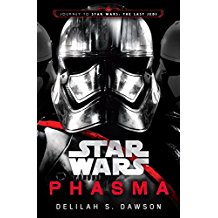 Journey to Star Wars: The Force Awakens Smuggler’s Run: A Han Solo Adventure (Star Wars: Journey to Star Wars: the Force Awakens) Rucka, Greg (Author), Phil Noto (Illustrator)
Journey to Star Wars: The Force Awakens Smuggler’s Run: A Han Solo Adventure (Star Wars: Journey to Star Wars: the Force Awakens) Rucka, Greg (Author), Phil Noto (Illustrator)
Journey to Star Wars: The Force Awakens The Weapon of a Jedi: A Luke Skywalker Adventure Fry, Jason (Author) Phil Noto (Illustrator)
Moving Target: A Princess Leia Adventure (Star Wars: Journey to Star Wars – The Force Awakens) Castellucci, Cecil (Author), Jason Fry (Author), Phil Noto (Illustrator)
Before the Awakening (Star Wars) Hardcover – December 18, 2015 by Greg Rucka (Author), Phil Noto (Illustrator)
Todd Moe, NCPR morning host
“Astrophysics for People in a Hurry” – Neil deGrasse Tyson. Fun, and sometimes funny, writing style. Space, science, physics, Quarks, Quasars, and how the Milky Way got its name! And, always remember, as Tyson says, “The Universe is under no obligation to make sense to you.”
Jon Sklaroff, underwriting manager
Ta-Nehisi Coates’ run on the Black Panther (Marvel comic book). Fun fact about the character, he pre-dates the Black Panther Party, and in the 1970’s Marvel briefly used the name Black Leopard to avoid anyone connecting the character to the party.
Mike Alzo, The Folk Show host
Here’s what is I’m reading/working my way through this summer:
Andrew Keen / The internet is not the answer
R.T. Naylor / Crass struggle : greed, glitz and gluttony in a wanna-have world
Dave Zirin / A people’s history of sport in the United States
Groucho Marx / Groucho Marx and other short stories and tall tales
William F. Pepper / The plot to kill King : the truth behind the assassination of Martin Luther King, Jr.
Nassim Nicholas Taleb / Antifragile : things that gain from disorder
Maria Konnikova – Mastermind : how to think like Sherlock Holmes
Rana Faroohar / Makers and takers : the rise of finance and the fall of American business
Brian Duerr, Starksboro VT
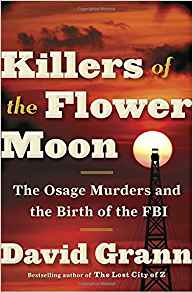 Killers of the Flower Moon: The Osage Murders and the Birth of the FBI.
Killers of the Flower Moon: The Osage Murders and the Birth of the FBI.
The Swamp: About the development, destruction and subsequent restoration of the Everglades.
The Cowboy & the Cossack: Fiction about a bunch of Montana cowboys in the late 1800’s, bringing 500+ head of cattle to Russia and joining with Cossacks to move the herd across the country.
Yeah, nothing that’s in vogue right now!
Parmelee Tolkan, Lake Placid
All Things Cease to Appear, Elizabeth Brundage. A NYT 100 most notable book of the year a couple of years ago Set in a gentrifying town in the Hudson Valley near Albany the book starts with death then goes through flashbacks to arrive at the present. It weaves together the lives of the farm family forced to sell their land with the purchasers. It’s really more about people, loss, love and how absence creates scars in human psyches.
I also would like to mention Gurinder Basran, a Canadian writer of India Indian descent, her first novel, Everything was Goodbye won two prizes in Canada in 2010/11. I’ve not read it, but I have read a publishers copy of her next Someone You Love is Gone. Coming out in Nov. 2017. Really wonderful. From the jacket, better and more succinctly than l could put it: “Exploration of loss and love, memory and history, family ties and family secrets, and the thin veil between this life and the next. ” Her writing is really beautiful. I didn’t want the book to end.
Homegoing, Yaa Gyasi. W woman writer’s novel about slaves and the trade. Set in Africa and America from the 1700s to the present.
Bruce Morrow, Keeseville
Two new books about Montreal that Montreal-lovers will appreciate knowing about.
300 Reasons to Love Montreal, by Claire Bouchard. Juniper Publishing. Originally published in French. Sights, restaurants, stores, culture and activities, some that you likely haven’t seen mentioned elsewhere, grouped by boroughs and neighborhoods. Paperback
Discovering Montreal’s Religious Heritage. Writing by Siham Jamaa and Pierre Daveluy. Published by Ulysses, originally published in French. Offering tours and photographs of places of worship and their artwork. Paperback
Dan, Bombay
Above the Waterfall and Serena, Ron Rash.
Linda Cohen, Old Forge
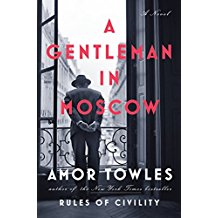 Gentleman in Moscow, AmorTowles
Gentleman in Moscow, AmorTowles
Gift of Rain and Garden in the Evening Mists, Tan Twan Eng
Born a Crime, Trevor Noah
Al Franken, Giant of the Senate, Franken
And my favorite…
Soul of an Octopus: A Surprising Exploration into the Wonder of Consciousness, Sy Montgomery
Neal Burdick, Canton
All the Pretty Horses, The Crossing and Cities of the Plain, books 1, 2 and 3 of Cormac McCarthy’s Border Trilogy. Fine, spare, Hemingway-esque descriptive writing.
A Year in the Life of William Shakespeare: 1599, by James Shapiro. Packed with info and insights. Especially enjoyable since we just returned from England, where we visited Stratford-Upon-Avon and the Globe.
Anne Damrosch, Burlington
The Inugami Mochi, Jessamyn Smyth. For dog lovers only.
Jackie Pray, somewhere on the Raquette River
I missed The Cellist of Sarajevo by Steven Galloway when it was published in 2008 and just discovered it. It’s a beautiful little book about how four people struggle to retain their humanity while living under siege in Sarajevo during the Bosnian Croatian war of the 1990s. The pace and prose are lovely; the content touching and thought provoking. I read it months ago and still think about it. It has particular relevance now as we try to understand the experience of people living under fire in Syria.
Dan Creazzo via email
A friend recently turned me on to Steve Berry. In the last couple of weeks I’ve zipped through The Templar Legacy, The Amber Room, and am currently reading The Alexandria Link. I have two more on my coffee table at home, that I can’t wait to get to. Anyone who likes Dan Brown’s symbols novels will eat these up!
Lorraine Schiavi via email
A book I liked so much, I bought 5 copies to give to friends – A Tale for the Time Being by Ruth Ozeki.
It’s the story told in diary form written by a young woman in Japan. It and a variety of objects wash up on the shore of a island off the shore of Washington State. The woman ( a writer also named Ruth) is intrigued and eventually obsessed with finding what happened to the girl and her family. The young girl’s grandmother, a Buddhist monk, figures prominently in the narrative and help’s drive both the story and her grand-daughter growth. If you like magic realism, this gives you a Japanese-Buddhist version
Mark, Lake Placid
World War I in fiction, non-fiction and memoir.
Three Day Road, Joseph Boyden
To Conquer Hell: The Meuse-Argonne, 1918 The Epic Battle That Ended World War I, Edward G. Lengel.
War Bugs, Charles McArthur.
Elaine, Vergennes
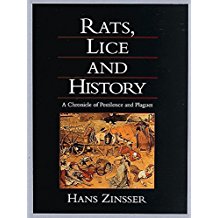 Rats, Lice and History: A Chronicle of Pestilence and Plagues, Hans Zinsser.
Rats, Lice and History: A Chronicle of Pestilence and Plagues, Hans Zinsser.
Elizabeth, Malone
An Untamed State, Roxane Gay. Also by this author, Hunger: A Memoir of (My) Body, Difficult Women, and Bad Feminist: Essays.
Four books by Tracy K. Smith, Life on Mars: Poems; Ordinary Light: A Memoir; The Body’s Question: Poems; and, Duende: Poems.
The Wretched of the Earth, Franz Fanon.
The books of James Edgar Wideman.
Unspeakable, Chris Hedges and David Talbot.
Anything by Dan Berrigan, Pema Chodron, or John Dear.
Craig, somewhere in Texas but raised in the North Country
Lonesome Dove, Larry McMurtry.
Rebecca Donnelly, Norwood (she’s librarian there)
For children and young adults:
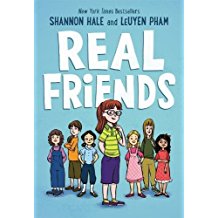 Real Friends, Shannon Hale. A graphic novel.
Real Friends, Shannon Hale. A graphic novel.
Amina’s Voice, Hena Khan.
American Street, Ibi Zoboi.
the Hate You Give, Angie Thomas.
Keith, North Creek
The Sellout, Paul Beatty.
Ann, Chase Mills
The Book of Joy: Lasting Happiness in a Changing World, Dalai Lama and Desmond Tutu.
When Breath Becomes Air, Paul Kalinithi.
Danielle, Chase Mills
The Life and Times of the Thunderbolt Kid: A Memoir, Bill Bryson.
Ray, Paul Smiths
Here Be Monsters (Book 1 of Tyler Cunningham Series), Jamie Sheffield–mysteries.
The Tortilla Curtain, T.C. Boyle
Tags: reading list








The cowboys in the book that I listed are from Montana, not Texas! OOOOPS!
Are the women wearing bathing suits in the B&W photo also wearing heels?
I just finished Roller Girl, by Victoria Jamieson
http://www.victoriajamieson.com/books/
It is a upper Middle School book about a young girl who learns to skate and be a member of a Roller Derby team.
But more importantly, she has to deal with changing alliances of friendships
On Tyranny: Twenty Lessons from the Twentieth Century, by Timothy Snyder, 2017
Is it possible to get a hard copy of this list? Thanks so much. Claudia